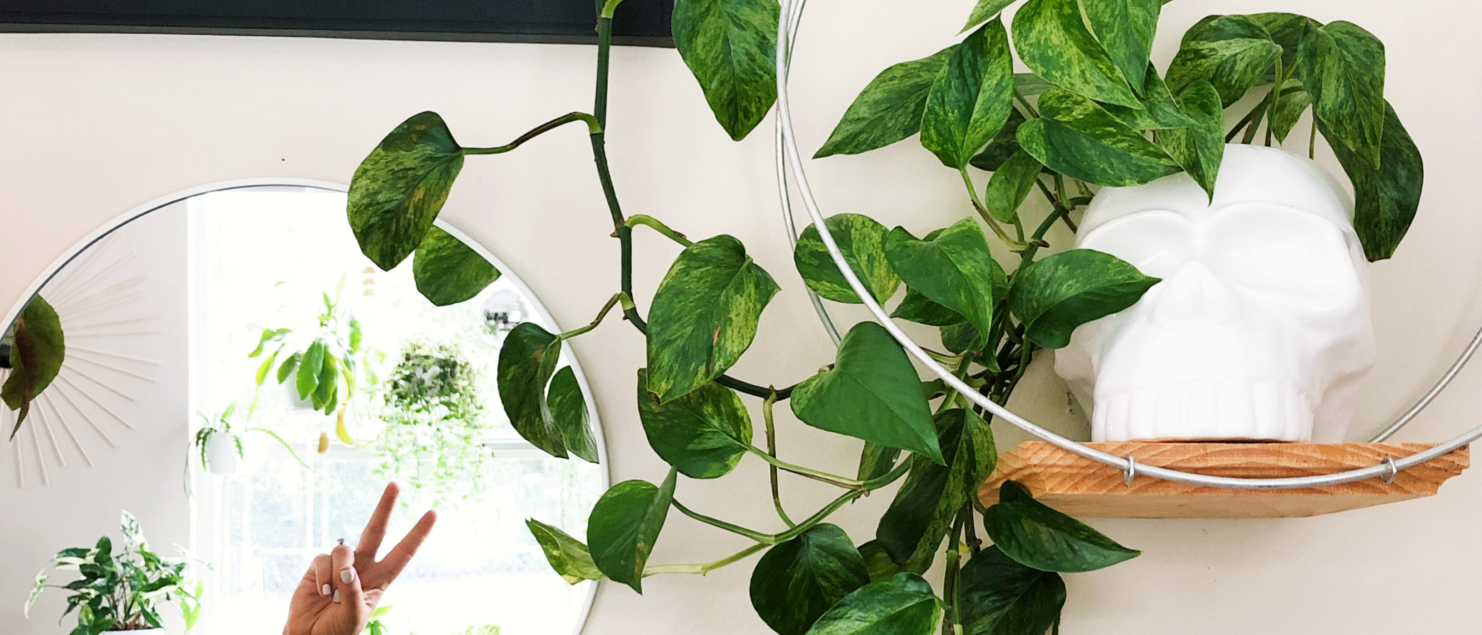Sustainable Houseplants: Making A Greener Hobby
Houseplant sales have been booming in the last few years for many reasons, one being the pandemic. Houseplant sales rose almost to 20% during 2020 from the previous year with 7 out of 10 millennials referring themselves as ‘plant parents’.
You may think that houseplants are one of the most sustainable and eco-friendly hobbies out there – since you’re growing plants and creating a greener home. But there’s a lot of ways that the houseplant hobby isn’t the greatest at when it comes to sustainability.
Fighting with consumerism but also wanting to collect a jungle worth of plants or have the coolest and rarest plants out there is something a lot of plant parents are fighting with themselves over. Not to mention the importing of those rare plants.
I’m going to go over ways you can become more ways you can have a sustainable houseplant hobby and make your green hobby, greener.
Recycle & Repurpose
There are many ways you can reduce your waste when it comes to sustainable houseplants. One way is to start thinking out of the box before you toss something out. After you finish your Starbucks iced coffee or even those Chinese food take-out containers think,
“Can this be used in another way?”
These containers are great for propagation. I like to use the take-out containers as propagation boxes which create a humid environment, and the Starbucks cups, or really and kind of plastic cups I use to water propagate. I can’t tell you how many containers I have that someone else might think is just garbage and honestly, they work just as good as buying a container.

Finding creative ways to reuse and repurpose “garbage” is a good way to help keep this houseplant hobby more sustainable. Like repurposing a candle jar as a planter. This is one of my favorite things to do when it comes to keeping sustainable houseplants. Any time I’m out looking for a candle I always have an idea for a second life for the jar.
Here’s how I take a candle jar and create a new planter:
- Burn down the candle until the wick cannot hold a flame.
- Once your candle is all out of wick, heat water to an almost boil and pour that hot water into the jar.
- Wait until the wax starts to float to the surface – usually only takes 5-15 minutes. Sometimes with soy wax candles the wax won’t completely float to the top, but this is a good way to soften it up.
- Take out the wax that’s floating on top and discard, or if you have a wax melter you can get a little more use out of it.
- Carefully pour out the hot water and wipe away the excess wax. This step can get messy due to the soft greasy wax.
- Using dish soap or a detergent that is effective in cutting grease, wash the new planter and dry off.
- If you have a diamond drill bit you can drill a drainage hole into your planter. If you don’t have a drill bit you can plant the plant into a nursery pot that fits the jar.
- And voila! Now you can either plant the plant in the planter with a drainage hole or put your planted plant with the fitted grower pot into the new planter.
*Tip – if your nursery pot doesn’t fit exactly to the candle jar you can create 1-3” slits on the sides of the pot to help it fit in better or cut off the top so it’s the correct length.


Reusing What You Have
When you’re repotting a plant, think about if that soil or any additives can be used again. Sifting out the soil to separate the bark, perlite, charcoal and even the moss can all be used in another potting mix.

If the potting mix shows no signs of pests, mold or rotting this can be used as potting soil for another plant.
When propagating try to opt into using things like leca, pon, or perlite. These can be sanitized and used again by boiling off any bacteria. Sphagnum and peat moss can be reused by boiling, but these are not the most sustainable mediums, so try to avoid buying them.

Both Sphagnum moss and peat moss are mined by practically draining the mogs to collect. Not to mention that growing moss is not a renewable source, since it takes such a long time to grow back at the rate of 2 inches per century. But good news with moss is you can reuse it.
Buy From Locals
If you’re going to buy a new plant, make sure you’re buying from a local plant shop, not only to help your local mom-and-pops but to reduce your emissions due to shipping. Just by doing this you’re reducing your greenhouse gas emissions by up to 5%.
Imagine if everyone did this for just a day.
And there’s no more sitting around tracking your package, anxiously waiting for your plant.
Even checking on places like Facebook Marketplace to see what people in your area are selling, which extends to more than just plants – but plant supplies, too.
It also doesn’t hurt to find out how sustainable your plant shops are. Finding out if they practice the 3 R’s (reduce, reuse, recycle) and finding the houseplants are found in a sustainable way.
Sourcing plants is a big issue with some plant shops. Some shops have been known to buy from importers that are essentially ripping plants from their environment and not growing from propagations. Which is a huge issue when it comes to protecting plants that are on the verge of becoming endangered.
Plant Swapping
This is what the plant community is best for. Some of the most giving people I’ve met, are in the plant community. If you have a rare or hard to find plant that someone may want to trade their plant for will not only save you money but will reduce bad things for the environment like importing.
There are many local groups you can get involved with that do plant swaps/met ups. Not only can you create relationships with like-minded people, but you can possibly get a plant you’ve been wanting.
You don’t even need to swap a full/established plant. That’s the beauty of plants, you can propagate them. So depending on the swap meet rules, you can just bring a cutting of a plant, while keeping your full plant at home.

Donate Unwanted Plant Supplies
You know those grower pots you buy your plants in? They have a purpose than in a landfill. If you’ve collected a tower of grower pots – donate them to your local plant nurseries. Places like those mom-and-pop shops will be grateful for those planters.

Donating jars or planters that you’ve tired to local thrift shops will give someone else a nice new home for their plants.
Buy Second Hand Or Damaged Goods
Whenever you can, buy second hand. Thrift stores are FULL of propagation jars, planters, and even plant stands. I’ve even found cute tables and hangers that help me with creating more space for…more plants.
You want to know something that a lot of people don’t think about or even miss when visiting hardware stores? There’s a plant clearance section! Often the plants in this area aren’t really damaged or dying.
I’ve seen a lot of plants in the clearance section that just simply needed water. These plants will eventually be thrown away after a certain time. So, if you’re up for the challenge on figuring out what’s wrong with the plant. It will not only save you some money but will be really rewarding.
Obsessing Over A Home Jungle
I’ve talked about all the great things that plant community brings, but one thing that isn’t the greatest is the feeling like you don’t have enough plants in your collection or the newest and most trendy plants.
Trends fade, but you’ll have that plant as long as you keep it alive. Really make sure you actually want that plant and are not falling into consumerism.

Now I know I need to practice what I preach, but over the last year I’ve slowed down my purchase to around one plant a month verses the 5-10 plants a month I was at in 2021. Consumerism gets the best of us. Don’t become obsessed with buying up all the plants.
Green Home & A Green Planet
Just by making a small change in your habits in your houseplant hobby can make a big impact, even if you don’t feel like it does. Changing the way, we think is the first step into becoming more sustainable with your houseplants and being more earth friendly and creating a greener space that we can all love.
I hope you all learned ways to be more sustainable with your houseplants.
Have a happy earth day!


